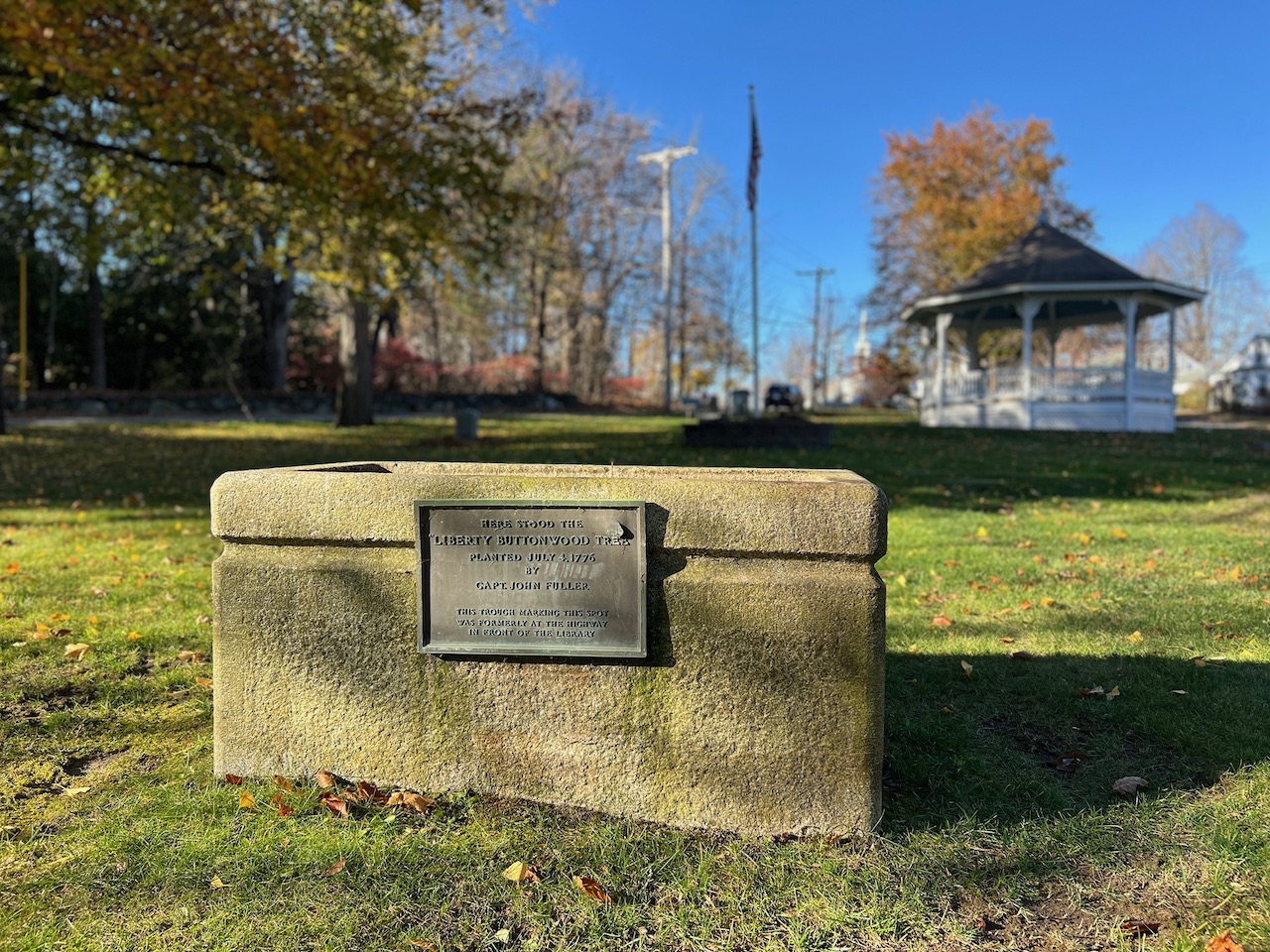In 1898, at a time when transportation was primarily equestrian in nature, Lunenburg resident Benjamin Jones gave $100 to the Town to replace the old wooden watering trough with one made of stone. For reasons unknown, the project, designed by Fred Francis (son of famous architect H. M. Francis of Fitchburg) and sited in front of the newly constructed Ritter Memorial Library, wasn’t completed until 1909.
By this time, automobiles had become a more common mode of transportation, and the structure soon outlived its practical utility, not to mention its location proved to be a danger to motorists. The Town relocated the trough to the Lower Common and repurposed it as a marker identifying the original location of the Lunenburg Liberty Tree.
Liberty trees were a phenomenon in towns and cities all over the newly founded United States. Municipalities across the Thirteen Colonies planted or designated liberty trees inspired by the original elm that stood near Boston Common in the years leading up to the American Revolution. In doing so, townspeople affirmed their shared national identity and dedication to the country’s founding principles.
As noted in the 1985 Lunenburg Lower Common Watering Trough Historical Resource Inventory Form by Marian Miller, Lunenburg’s Liberty Tree was a buttonwood on the Lower Common. According to one tradition, it was planted on April 19, 1775 by Captain John Fuller before he and the 5th Massachusetts Regiment departed to face the British in Concord.
The plaque placed on the trough marks a different date, however. It claims Captain Fuller planted the tree on the same day the Continental Congress formally declared independence from Great Britain. In part, it reads:
HERE STOOD THE
“LIBERTY BUTTONWOOD TREE”
PLANTED JULY 4, 1776
BY
CAPT. JOHN FULLER
THIS TROUGH MARKING THIS SPOT
WAS FORMERLY AT THE HIGHWAY
IN FRONT OF THE LIBRARY


